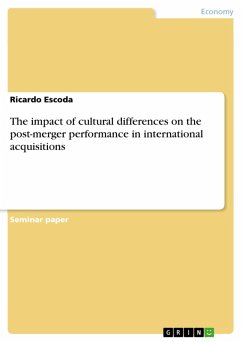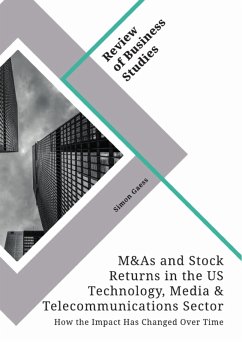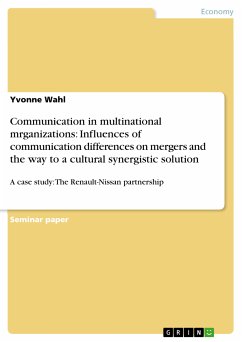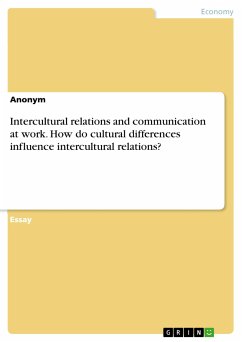Seminar paper from the year 2017 in the subject Business economics - Miscellaneous, grade: 1,7, University of Augsburg, language: English, abstract: As the number of international mergers and acquisitions (M&As) increased formidable during the last decades, it is a highly discussed phenomenon, which is becoming more and more important (Erel et al., 2012). Nearly 30 years ago, in 1987, there have been merely 5.000 M&As worldwide, whereas in 2016 already 50.000 M&As were concluded and latest stats even predict increasing numbers of M&As. M&A experience might both harm and help post-merger performance in international acquisitions. As stated by Schoenberg (2000) national cultural differences mainly present a strong challenge for cross-border acquisitions. Since the initial financial expectations are met simply by one half of all M&As, cultural differences might be at fault for this high failure rate (Zollo and Meier, 2008). Given that cross-border M&As consolidate two or more different cultures, it has to be taken into consideration that incidents such as differing legislations, currencies, languages and cultural norms do play an essential role. As a result of those distinctions, costs to the integration process might occur and the capability of firms to achieve synergies might be subverted. Thereby, the expected economic advantages of the merger or acquisition will be affected, too. Key factors like the integration of the participating companies in each other and enormous adaptation operations are irrecoverable to accomplish synergies and advantages of M&As. The hypothesis whether national cultural differences between acquirers and targets are likely to undermine post-merger performance has been researched myriad. An appropriate classification reclines in whether cultural differences matter, when they matter, under what conditions and in which way they do. The elaboration of this paper is based on the theory of Hofstede (1980), who was one of the first to explicitly address the impact of culture on the integration process of M&As by explaining cultural differences might generate misunderstandings and conflicts between the two merging organisations. Hence the aim of our analysis is to dissect the impact of cultural differences on the post-merger performance in international acquisitions by focussing on two out of four dimensions of Hofstede (1980) by means of the works of Ahern et al. (2009) and Huang et al. (2017).
Dieser Download kann aus rechtlichen Gründen nur mit Rechnungsadresse in A, B, BG, CY, CZ, D, DK, EW, E, FIN, F, GR, HR, H, IRL, I, LT, L, LR, M, NL, PL, P, R, S, SLO, SK ausgeliefert werden.









